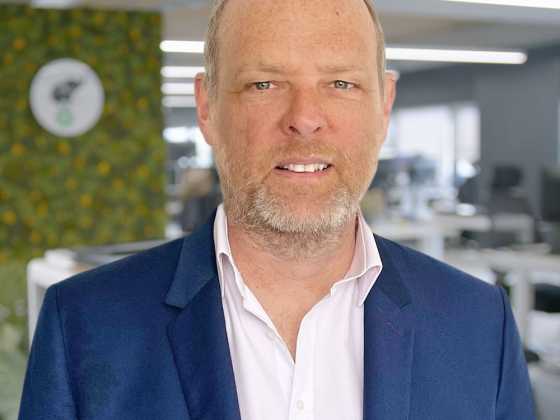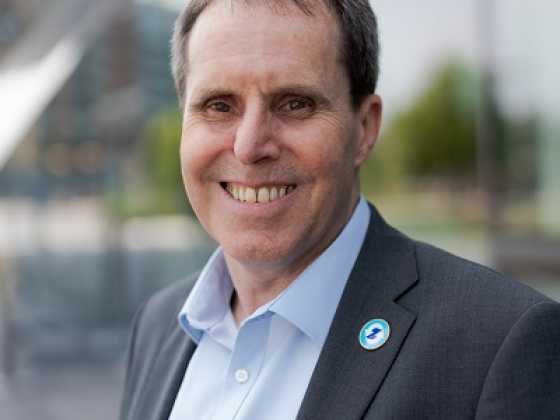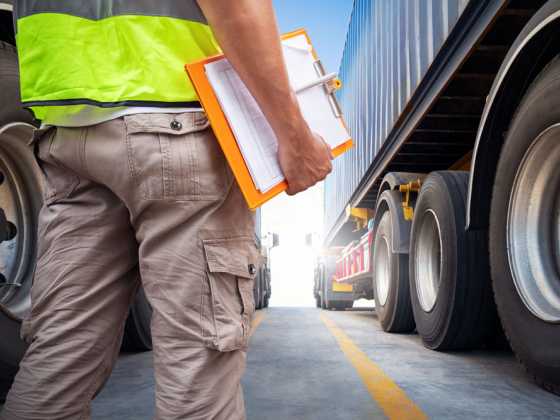Commercial GreenFleet: coming together to find solutions
With the support of TfL, Commercial GreenFleet on 19 September addressed the challenges freight and fleet operators are facing and gave delegates the opportunity to test drive a diverse range of vehicles – from electric scooters, through to pick-ups, vans and trucks
With climate protests taking place across the globe, the planet’s health is at the forefront of our minds. The UK government has made it clear that we need to reduce our emissions, and has made the goal even stricter by passing into law a target of becoming net zero-emission by 2050.
There is a desire to become more sustainable, but for operators of large vehicles, the solution is not so simple. While the government seems to be favouring electric vehicles as its powertrain of choice, large electric vehicles do not have the range or payload capability at present, meaning that other solutions must be found in the quest for zero emissions.
Against this backdrop, Commercial GreenFleet took place at the CEME Conference Centre in Rainham on 19 September.
With the support of TfL, the event had a conference chaired by LowCVP’s managing director Andy Eastlake which addressed the challenges freight and fleet operators are facing. Delegates were also able to take part in ride and drive opportunities with a range of vehicles – from electric scooters through to trucks. What’s more, specialists were on hand to discuss the products and services available to make commercial fleets greener, such as EV charge points, telematics, fuel cell technology and retrofit solutions.
Government ambitions
Richard McGreevy from Transport for London spoke about the Mayor of London’s Transport Strategy. He explained how on 26 October 2020, the emission standards for buses, coaches and lorries are being tightened from Euro IV to VI. Owners of non‑compliant vehicles will have to pay £100 per day if they don’t meet Euro VI standard and £300 if they don’t meet Euro IV.
Despite the operational issues this may cause some fleet operators, these measures are expected to result in a 28 per cent reduction in road transport NOX emissions London wide and between five and ten per cent reduction in concentration levels at the roadside. It is also expected to have a 64 per cent reduction in the amount of roads exceeding NO2 limit values, and it will mean 71 per cent fewer schools will be in areas exceeding legal air pollution limits by 2021.
Rob Gould from the Office for Low Emission Vehicles (OLEV) spoke about the government’s Road to Zero strategy. The government is aiming for all new cars and vans to be effectively zero emission by 2040.
To make this happen, the government has a raft of measures planned, including increasing the amount of charge points and making the charging infrastructure more user-friendly. There is a public consultation on changing building regulations in England so that all new-build homes are fitted with an electric car chargepoint. The government also wants chargers to be ‘smart’ and to allow drivers to use credit/debit card payments to pay for charges.
To increase electric vehicle uptake, Rob went on to talk about the incentives available, such as the Plug-inCar Grant, tax measures and the establishment of Go Ultra Low, which is a campaign to increase awareness of EVs. To reduce the emissions of commercial vehicles, the government has put in place the Plug-in Van Grant, has changed the rules of driving licence requirements for 4.25 tonnes, and put in place subsidies for E-cargo bikes.
Rob ended the talk with a recap on the funding the government is putting in to reduce transport emissions, including £40 million for wireless and on-street charging, £30m for vehicle to grid technology, and £23 million to research hydrogen.
Charging requirements
Alun Davies from ElectrAssure took a session giving advice to the audience on workplace charging and how to understand its requirements. He said that there is no one-fits-all blue print for installations and that organisations need to know their operational requirements, identify if they have enough capacity with their energy provider and find the most suitable locations.
While electrification of large vehicles has its limitations because of the ranges capable, hydrogen could be a good solution for trucks as it is zero emission at the tail pipe, gives long ranges, and is quick to re-fill. Of course the problem is a limited charging infrastructure and a lack of available vehicles.
However, Beth Dawson from Fuel Cell Systems said that there will be 65 hydrogen stations across the UK by 2020. What’s more, Fuel Cell Systems Ltd provides a range of mobile hydrogen refuelling options for differing transport sectors. In fact, The HydroFLEX hydrogen-powered train currently utilises the company’s mobile refuelling truck to provide onsite fuelling.
Gas is widely becoming acknowledged as the most viable way of lowering the emissions of trucks. Matt Hunt from Gasrec spoke about the green benefits of LNG and CNG, using Ocado as a case study. Twenty per cent of Ocado’s fleet are run on bio-CNG. The environmental benefits of switching to gas include 99 per cent fewer particulate emissions and 70 per cent less nitrogen oxide than the latest diesel standard. The trucks are on average 50 per cent quieter than diesel vehicles and the new vehicles will reduce the Ocado HGV fleet CO2 emissions by 29 per cent annually.
Carlos Vicente from Eminox spoke about how retrofit technology is a way for companies to comply with Clean Air Zones, and about how the company’s technology is on the Clean Vehicle Retrofit Accreditation Scheme for the UK.
Sam Clarke from Gnewt Cargo told delegates about the Low Emission Freight Trial that it is doing in partnership with the Mayor of London. As part of the two-year trial, Gnewt is testing new electric
vans for last mile deliveries. Specially designed for the project, the vans are larger than most light goods vehicles and have an expanded capacity meaning fewer vehicles are required for deliveries, causing less congestion on London’s roads.
Taking to the podium to talk about technology, Andrew Pearce from LEVL telematics spoke about how its solution can identify EV opportunities. The technology works by adding Geotab to an exiting vehicles and using it to see if electric vehicles would be suitable in their replacement, as well monitoring how they perform when they are in place.
Alan Staines spoke about Milk and More’s electric fleet of StreetScooters and LDV EV80s. Geotab’s EV telematics was installed throughout the fleet to monitor driver behaviour to improve range & fleet safety. It was also used to monitor and measure existing ICE vehicles to identify EV opportunities.
Vehicles
Mike Haran from van manufacturers LDV briefed delegates on the company’s electric vans. This year LDV launched the EV30 – a small, fully-electric commercial vehicle with zero emissions and a choice of two battery packs; a 35kWh battery which offers a range of 127 miles and a 53kWh battery with a range of 200 miles. Delegates were able to test drive the electric EV80 in tipper and wheel chair accessible variants.
Jorge Asensio from Iveco spoke about the manufacturer’s full range of natural gas models, from light commercials to heavy duty long haul trucks, as well as buses. The Stralis NP 460 and Daily CNG were showcased on the day.
Matt Gibson from Isuzu told delegates about its range of pick up vehicles. Equipped with a 1.9 turbo diesel engine, the Isuzu D Max pick up delivers 164PS and 360Nm of torque. With towing capabilities of 3.5 tonnes, a maximum payload of 1,161kg and a 4x4 drive, the Isuzu D Max achieves 40.4mpg, meets Euro 6 emissions standards and doesn’t need for AdBlue. The Isuzu D Max Blade was present as a display only vehicle but delegates were able to test drive the Isuzu D Max Utah. Focusing on solutions for last mile deliveries, Jeremy Boorer from Green Mopeds spoke about its range of fully electric two and three wheeled mopeds and motorcycles - which have ranges of up to 75 miles per charge. With no road Tax, congestion or ULEZ charges, the vehicles have low running costs of around 1p/mile, minimal servicing requirements, and most are eligible for the Plug in MotorCycle Grant.
Mellor showcased the world’s first all electric, low floor bus, the Orion E. First launched in 2017, the latest generation was revealed earlier this year and features a range of advancements in electric vehicle technology.
LEVC, (London EV Company), the makers of the Iconic ‘Black Cab’, showcased its purpose‑built, range‑extended electric taxi, the TX.
Exhibitors
Specialised Training were on hand to talk about its LGV driver training. With their network of over 400 training centres across the country, they’re able to assist companies who’re struggling with their licence acquisition programmes.
Hartridge was available to discuss its experience in diesel fuel injection test equipment, and Alliance Transport Technologies showcased its aftermarket products and services for the bus, coach and commercial vehicle industries. Representatives from HJS Emission Technology meanwhile were on hand to talk about the company’s modular exhaust systems for reducing exhaust emissions.
Elmtronics and Rolec EV displayed their electric vehicle charging equipment, and The Algorithm People were present to show delegates how technology can improve vehicle utilisation, reduce costs and cut emissions.






